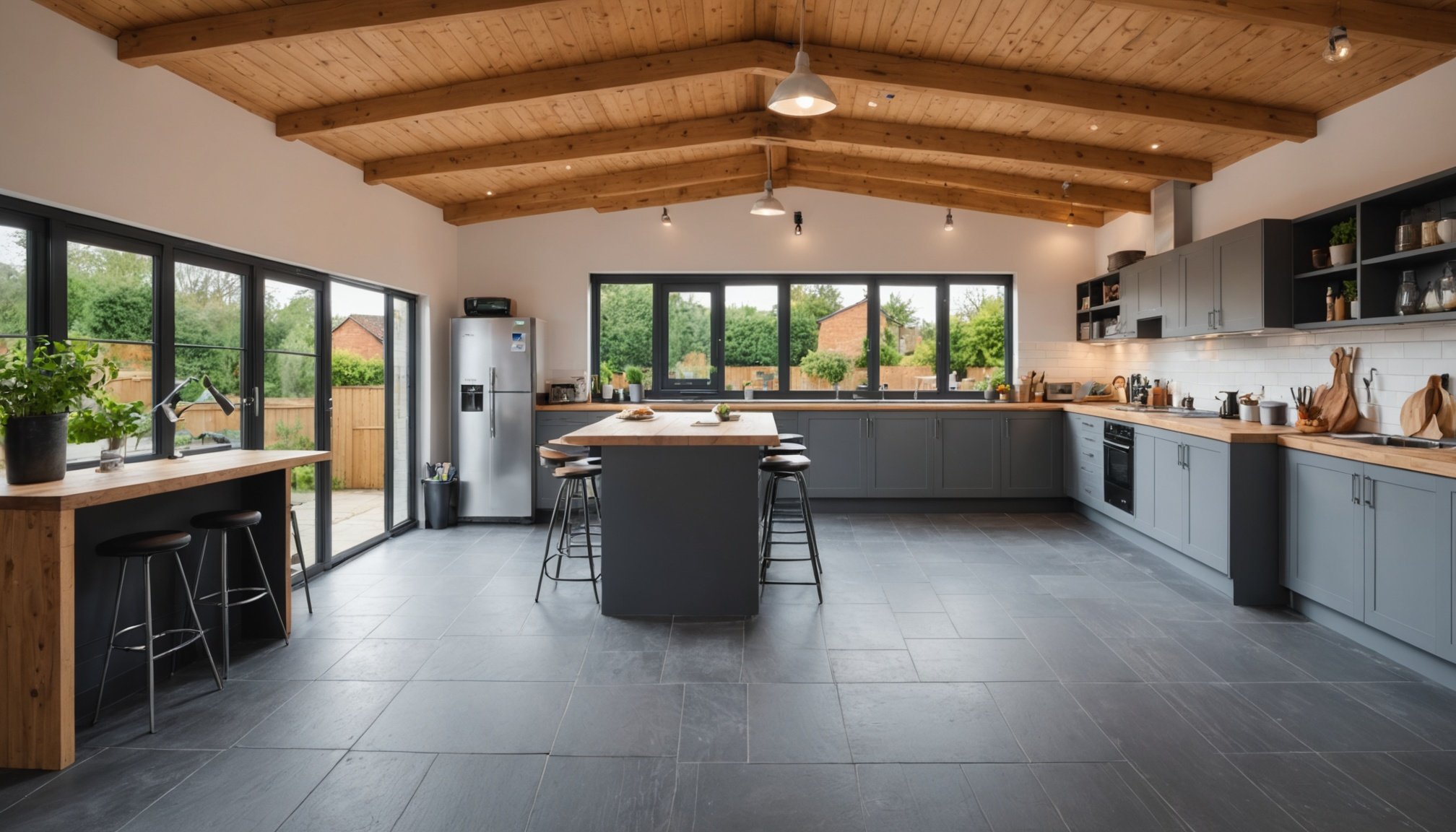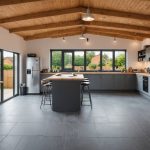Are you considering transforming your garage into a legal living space? This comprehensive guide provides homeowners in the UK with essential information on the necessary regulations, planning permissions, and practical steps to make this dream a reality. Unlock the potential of your unused space and create a functional living area that not only enhances your home but also adds value to your property. Discover how to navigate the legal landscape while maximizing your property's utility and appeal.
Understanding Legal Requirements for Garage Conversion
Converting a garage into a livable space is an exciting project, but it's crucial to understand the legal regulations involved. In the UK, securing planning permission is often the first step. Generally, if the conversion doesn't alter the building's footprint or external appearance, planning permission may not be required. However, this can vary significantly depending on local planning regulations.
A lire en complément : Ultimate Guide to Creating Your Own Rainwater Harvesting System for Your UK Garden
Planning Permission Requirements
In some areas, especially those with strict conservation rules, planning permission is mandatory. It's advisable to consult your local planning authority to determine specific requirements. They can provide guidance on whether your project aligns with local development plans and if additional permissions are needed.
Key Building Regulations
Beyond planning permission, complying with building regulations is essential. These regulations ensure that the conversion meets safety and energy efficiency standards. Key considerations include adequate insulation, proper ventilation, and fire safety measures. Engaging a qualified surveyor can help navigate these requirements effectively.
Dans le meme genre : Designing a Secure and Fun Backyard Play Zone for Kids in the UK: Essential Tips and Ideas
Regional Variations
It's important to note that regulations can differ across UK regions. For instance, Scotland and Northern Ireland have distinct building standards. Understanding these differences is crucial for a successful conversion. Always verify regional specifics to avoid legal complications and ensure compliance with all necessary regulations.
Planning and Design Considerations
Transforming a garage into a functional living area involves thoughtful design ideas and strategic planning. Popular design styles for converted garages often include minimalist, industrial, and contemporary aesthetics. These styles not only enhance the visual appeal but also contribute to effective space optimization. Choosing the right style can set the tone for the entire project, ensuring a cohesive and inviting atmosphere.
When it comes to space optimization, consider the layout carefully. Utilise vertical space by installing shelving or lofted beds to maximise the available area. Open-plan designs can also create a sense of spaciousness, making the converted garage feel larger than its actual size.
Engaging an architect or designer is crucial for creating architectural plans that meet your needs while adhering to legal requirements. A professional can provide insights into structural changes, suggest innovative solutions for space limitations, and ensure that all design elements align with building regulations. Their expertise can be invaluable in avoiding costly mistakes and ensuring the project runs smoothly.
Incorporating these considerations early in the planning stage can lead to a successful garage conversion that is both functional and aesthetically pleasing.
Budgeting and Financial Planning
Understanding the cost estimation for a garage conversion is essential for effective financial planning. Typically, costs can vary widely based on the project's complexity, materials, and location. On average, UK homeowners might expect to spend between £5,000 to £15,000 for a basic conversion, with more elaborate projects reaching higher figures.
Financing Options
Homeowners have several financing options to consider. Personal loans, home equity loans, or remortgaging are common choices. Each option comes with its own set of benefits and drawbacks. Personal loans offer flexibility but may have higher interest rates. Home equity loans can provide larger amounts with potentially lower rates, but they require using your home as collateral. Remortgaging could lower your monthly payments, but it extends the mortgage term.
Creating a Budget Breakdown
A comprehensive budget breakdown is crucial for managing expenses effectively. Start by listing major costs, such as labour, materials, and permits. Don't forget to include a contingency fund for unexpected expenses. This detailed approach ensures that you stay within budget and can adjust plans as needed. Proper financial planning helps to avoid overspending and keeps the project on track.
Essential Utilities and Installations
When converting a garage into a living space, careful attention to plumbing, electrical work, heating, and cooling is vital. Addressing these aspects ensures a comfortable and functional environment.
Plumbing and Electrical Work
Plumbing is essential if you plan to include a bathroom or kitchenette in your converted space. This involves installing water supply lines, drainage, and possibly a hot water system. Electrical work is equally important, requiring the installation of outlets, lighting, and possibly a new circuit to handle increased power demands. Both tasks require adherence to safety standards and should be performed by licensed professionals to avoid hazards and ensure compliance with regulations.
Heating and Cooling Options
Choosing the right heating and cooling systems is crucial for maintaining a comfortable temperature year-round. Options include electric baseboard heaters, split air conditioning units, or underfloor heating. Each has its benefits and costs, so consider your budget and the climate in your region when making a decision. Proper insulation also plays a significant role in energy efficiency.
Hiring qualified professionals for these installations not only ensures safety and compliance but also enhances the overall quality and longevity of your converted space. Their expertise can help you make informed decisions tailored to your specific needs.
Case Studies and Common Pitfalls
Exploring successful transformations of garage conversions can provide valuable insights into the process. In the UK, many homeowners have turned underutilised garages into vibrant living spaces. One notable example is a London-based project where a garage was transformed into a stylish studio apartment. This conversion retained the original structure's integrity while integrating modern design elements, showcasing the potential for aesthetic and functional enhancement.
However, these projects often come with their share of challenges. Common issues include navigating complex local regulations, managing unexpected structural problems, and ensuring adequate insulation. Homeowners frequently encounter hurdles with plumbing and electrical installations, which require careful planning and professional assistance to meet safety standards.
Lessons learned from these experiences emphasise the importance of thorough planning and flexibility. Engaging with professionals early in the process can mitigate many challenges, ensuring that design plans align with building codes and regulations. Additionally, setting a realistic budget with a contingency fund can help manage unforeseen expenses. By learning from these experiences, future projects can avoid common pitfalls and achieve successful, compliant transformations.











